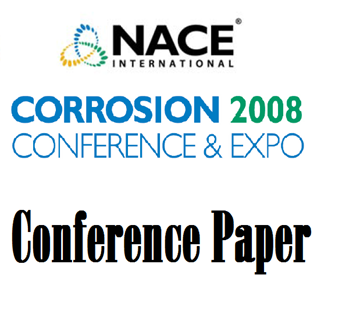Search
08272 Modeling the Combined Effect of Chlorides and Oxyanions on Localized Corrosion
Also Purchased
08271 Effects of Oxygen, Temperature and Salinity on Carbon Steel Corrosion in Aqueous Solutions; Model Predictions versus Laboratory Results
Product Number:
51300-08271-SG
ISBN:
08271 2008 CP
Publication Date:
2008
$20.00
08286 Real Time Corrosion Monitoring to Assess the Corrosivity of Oil Water Mixtures and the Kinetics of the Response of Corrosion Inhibitors
Product Number:
51300-08286-SG
ISBN:
08286 2008 CP
Publication Date:
2008
$20.00
08279 Update for Expected Service Life and Cost Considerations for Maintenance and New Construction Protective Coating Work
Product Number:
51300-08279-SG
ISBN:
08279 2008 CP
Publication Date:
2008
$20.00




